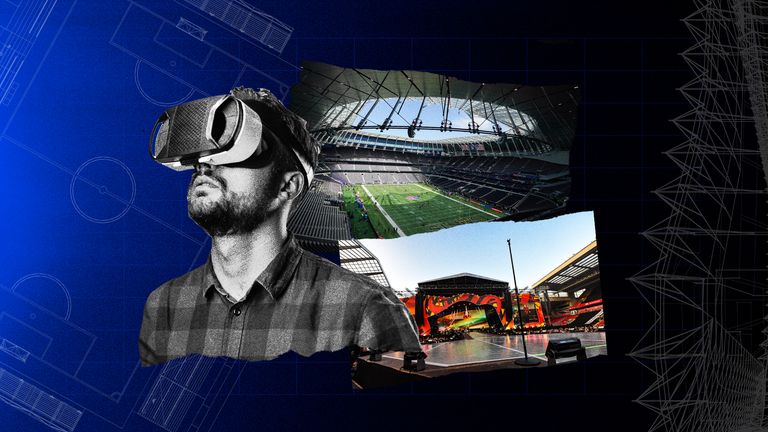
Football broadcasting has undergone dramatic transformations over the decades, from radio commentaries to high-definition television and now, the emergence of virtual reality (VR). As technology advances, VR is set to revolutionize how fans experience live matches, bringing them closer to the action than ever before. This article explores the future of VR in football broadcasting, the innovations shaping its development, and the impact it has on the fan experience.
The Rise of Virtual Reality in Sports Broadcasting
In recent years, VR has become a game-changer in the sports industry. Several broadcasting giants and football clubs have experimented with VR to enhance fan engagement. With the ability to place viewers in a virtual stadium, VR provides an immersive experience that rivals being physically present at the match. The increasing adoption of VR technology indicates that the future of football broadcasting may be more interactive and engaging than ever.
Key Innovations Driving VR Broadcasting
-
360-Degree Camera Technology – Football stadiums are now equipped with multiple 360-degree cameras, allowing fans to switch perspectives and watch the game from different angles.
-
Enhanced Streaming Services – Broadcasters are integrating VR with live streaming, enabling fans to watch matches in real-time with interactive features.
-
AI-Powered Personalized Viewing – Artificial intelligence is being used to tailor VR experiences, allowing users to focus on specific players or tactical aspects of the game.
-
Haptic Feedback and Sensory Enhancements – Advanced VR headsets now include haptic feedback, simulating the vibrations and sounds of a live stadium environment.
-
Augmented Reality (AR) Integration – Some VR applications incorporate AR elements, providing real-time stats, player information, and tactical analysis within the VR experience.
How Virtual Reality Enhances Fan Experience
The traditional ways of watching football on television or in stadiums are evolving. VR broadcasting offers fans several unique benefits:
-
Immersive Stadium Experience – Fans can feel as if they are sitting in the stands, experiencing the atmosphere of the match without leaving their homes.
-
Exclusive Behind-the-Scenes Access – VR enables fans to explore locker rooms, training sessions, and pre-match warm-ups in ways never seen before.
-
Customizable Viewing Angles – Viewers can switch between various camera angles, such as a pitch-level view, player’s perspective, or even a bird’s-eye view.
-
Interactive Social Features – Fans can watch games in virtual lounges with friends, regardless of their physical location, creating a more social viewing experience.
Challenges and Limitations of VR in Football Broadcasting
Despite its promising future, VR broadcasting still faces several challenges:
-
High Costs – Producing high-quality VR content requires significant investment in equipment and infrastructure.
-
Accessibility Issues – VR headsets are still relatively expensive, limiting access for a broader audience.
-
Internet Bandwidth Requirements – Streaming VR content requires a stable and high-speed internet connection, which may not be available in all regions.
-
Motion Sickness Concerns – Some users experience discomfort when using VR headsets for prolonged periods.
-
Licensing and Broadcasting Rights – VR streaming raises complex issues regarding media rights, as leagues and broadcasters navigate how to regulate virtual content distribution.
The Future of VR in Football Broadcasting
As VR technology becomes more affordable and widespread, football clubs and broadcasters are likely to invest more in its development. Here’s what we can expect in the coming years:
-
More Clubs Adopting VR Content – Leading clubs will integrate VR experiences into their fan engagement strategies, offering virtual matchday experiences and exclusive behind-the-scenes content.
-
Improved VR Devices – With the evolution of headsets and wearable tech, fans will enjoy more comfortable and realistic VR experiences.
-
5G-Powered Streaming – Faster internet speeds will enable seamless VR streaming, reducing latency and enhancing video quality.
-
Metaverse Integration – Football clubs may develop virtual stadiums within the metaverse, allowing fans to buy virtual tickets and interact with other supporters in a digital environment.
Conclusion
Virtual reality is shaping the future of football broadcasting, offering fans an immersive, interactive, and personalized way to experience matches. While challenges remain, the potential of VR in enhancing fan engagement is undeniable. As technology continues to evolve, VR will likely become an integral part of how football is consumed worldwide.
Football fans looking for new ways to support their favorite teams can stay updated and engage with their club through the WYN8 website. Get ready for the next generation of football viewing—VR is bringing the stadium to you!





Leave a Reply